Art History Inspired Birthday Cakes
Birthday cakes are an established tradition for many. Baking in itself is an art – a delicious one. So why have a cake that is only delicious? Make...
Vithória Konzen Dill 22 August 2024
Can you find the potato in an Arcimboldo painting? Do you prefer your potatoes in a landscape, a still life, or a stew? Come with me on a tour of the humble potato in art.
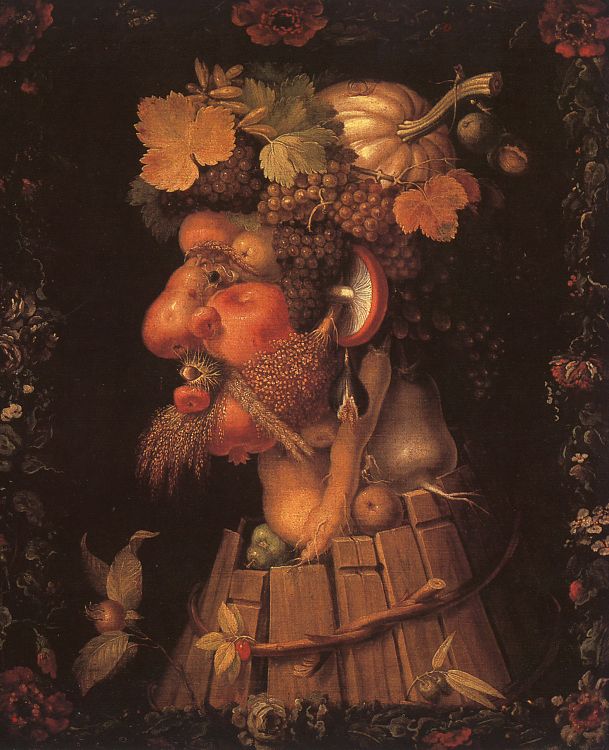
Guiseppe Arcimboldo, Autumn, 1573, Louvre, Paris, France. Wikimedia Commons (public domain).
The plain yet nourishing potato was domesticated 8,000 years ago in South America. Since then the potato has spread across the planet to feed millions, providing familiar meals in every country—mashed, baked, as chips, french fries, hash, gnocchi, soup, frittata, and even elevated to haute cuisine in a delicious dauphinoise. People make alcohol from potatoes, and now you can even buy potato milk!
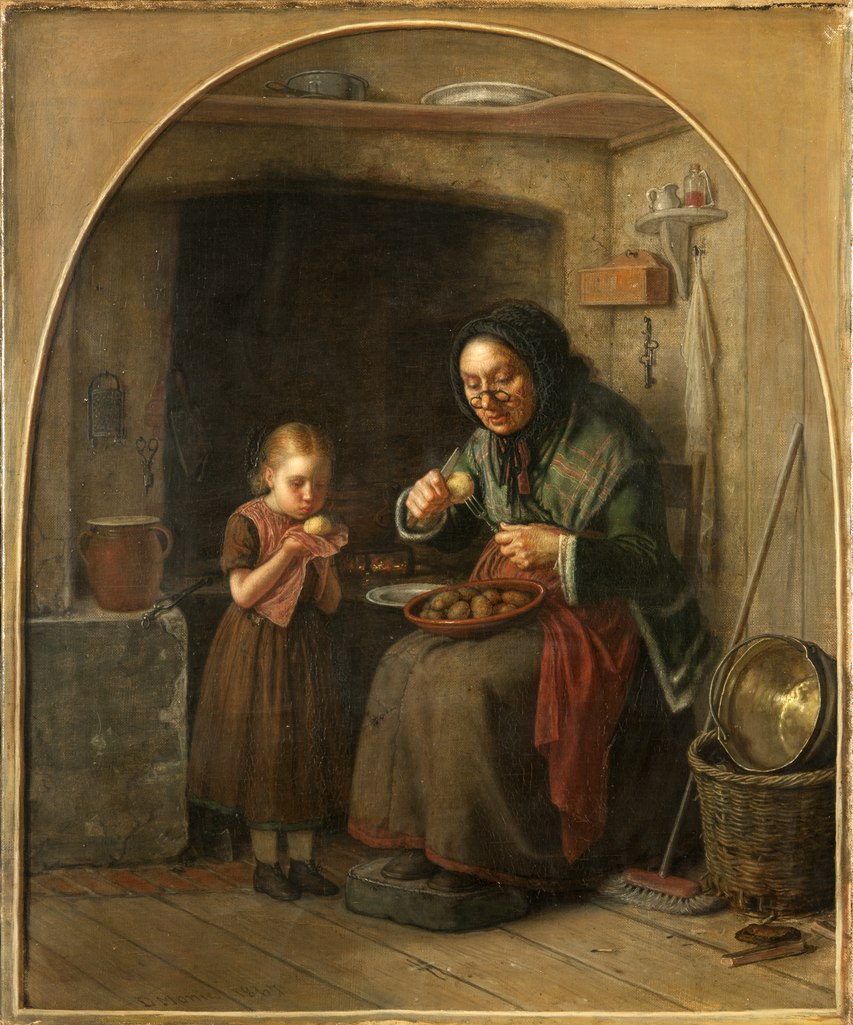
David Monies, The Hot Potato, 1867, Gothenburg Museum of Art, Sweden. Artvee.
This starchy vegetable is low in fat, packed with complex carbohydrates and essential amino acids, vitamins and minerals. I guess you could say I am a potato fan. And I wondered how many artists shared my tuber obsession? The answer is quite a few, so here are my top picks of the potato in art. Take a moment, maybe grab a glass of potent potato vodka, sit down (couch potato style) and browse these spuds!
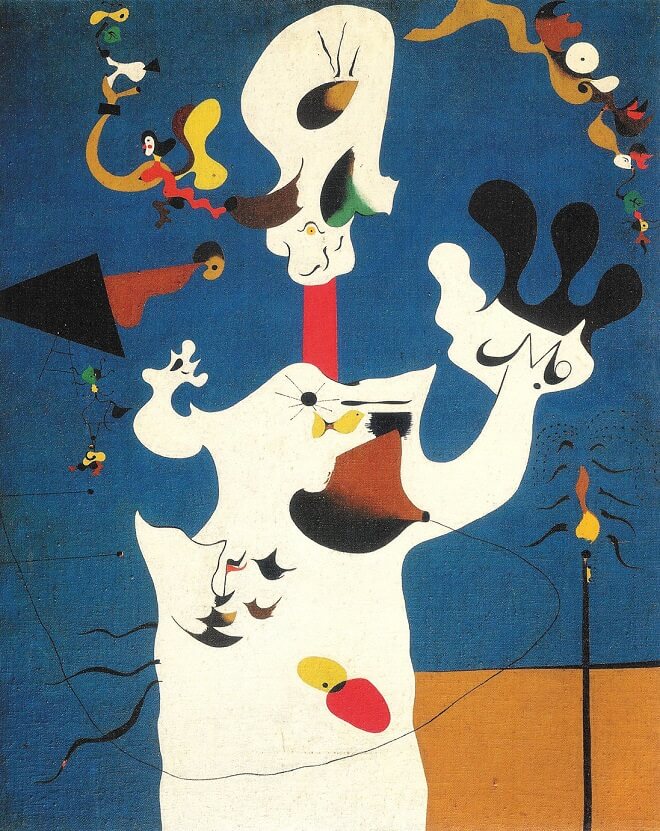
Joan Miro, Potato, 1928, Met Museum, New York, USA. Museum’s website.
First up, we have the Mayans in Peru. As a dietary staple, the Mayans would dry potatoes to transport them, rehydrating them with liquid to eat. British readers will be surprised to find that Smash (dehydrated instant mashed potato) was actually first invented hundreds of years before its heyday in the 1970s! The potato was in fact so admired by the Mayans that they buried them with the dead, and recreated them in sculptures and carvings. If you had been an ancient Inca, you might worship Axomamma, the potato goddess. Your village might have an odd-looking potato hidden safely in your town for visiting to pray for a good harvest!
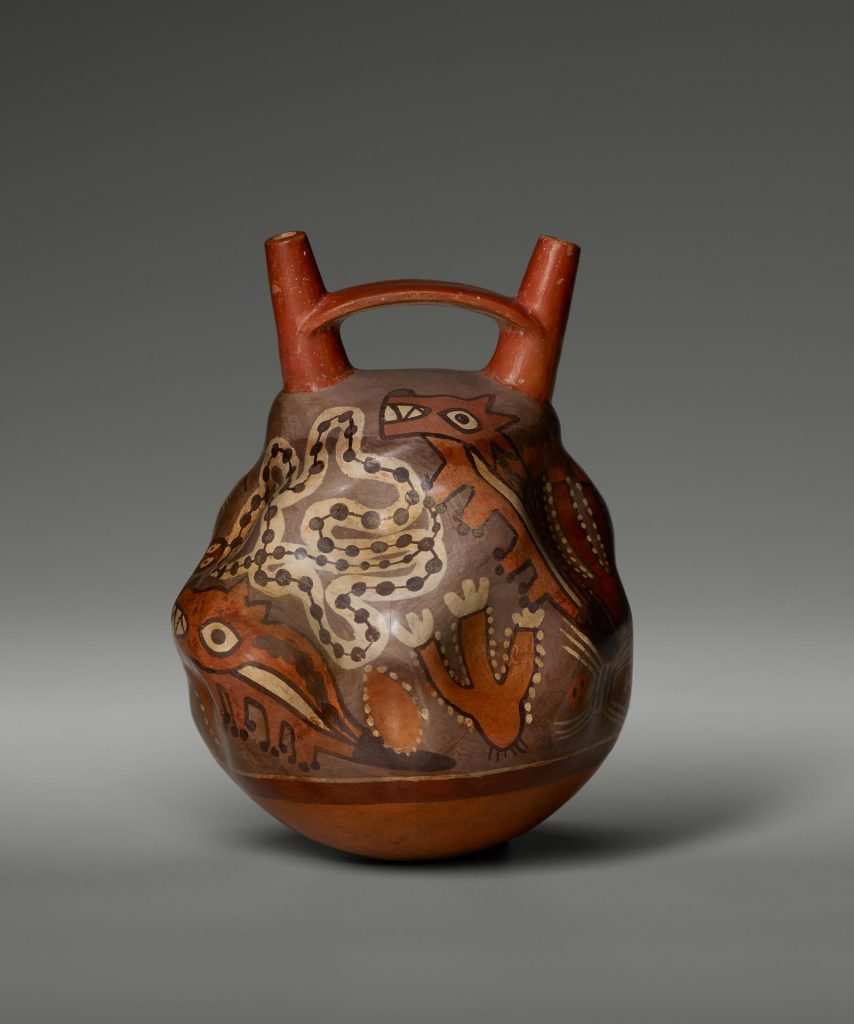
Peruvian potato-shaped vessel, 450-600 CE, Yale University Art Gallery, Connecticut, USA. Museum’s website.
Arriving in Europe in the 16th century, the nutritional value of the potato was not immediately apparent. It was considered rather exotic and fashionable; women wore the star-shaped flowers in their hair! Although the British are now famous for their fish and chips, they first boiled the leaves and stems to eat – yes, the poisonous parts (the potato is a nightshade family member). At least the French and Germans managed to identify the edible part of the plant, but the potato was still considered peasant food and shunned by the wealthy.
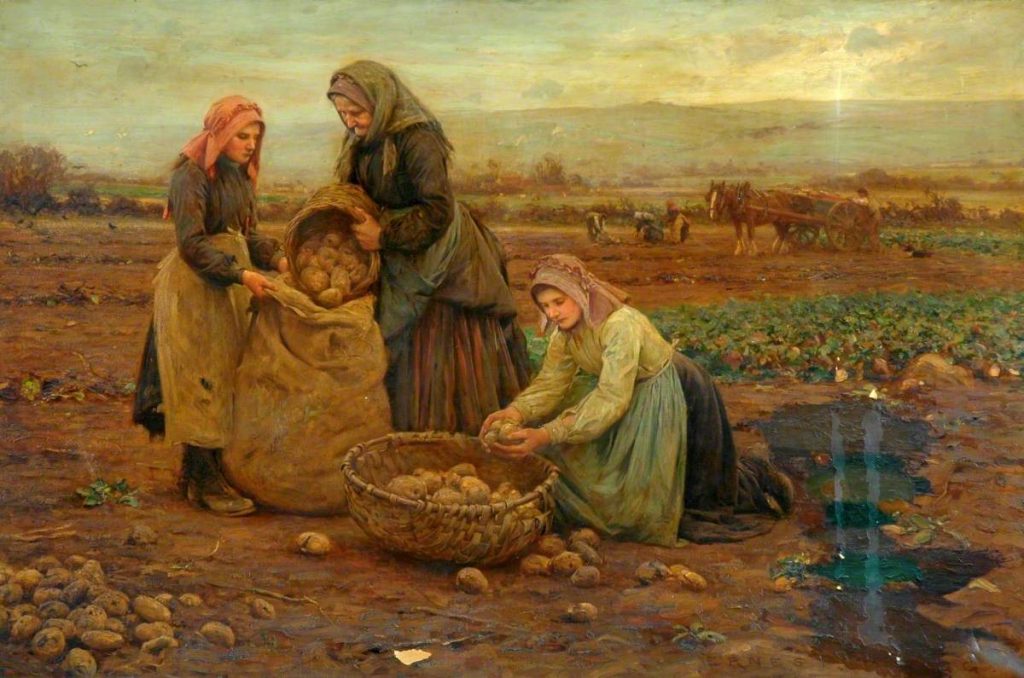
Ernest Higgins Rigg, The Potato Pickers, undated, Bradford Museums, UK. ArtUK.
In 1774, Frederick the Great of Prussia decided to offer free potatoes to his people to help them through a famine. What he found hard to swallow was that so many people rejected the offer of this free food source. He was determined to encourage people to overcome their poor opinion of the potato and authorized guards to pretend to patrol the potato fields, looking for thieves. Seeing this, the population believed the potatoes must be valuable and they would head to the fields at night to steal them, while the “guards” turned a blind eye!
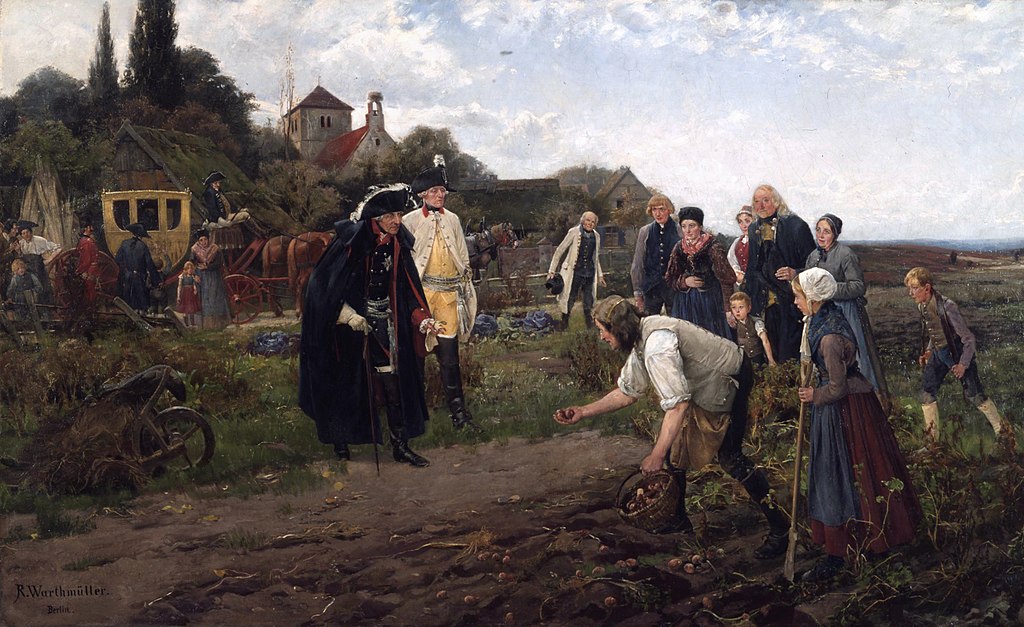
Robert Muller, The King Everywhere (Frederick the Great of Prussia examines the potato harvest), 1886, German Historical Museum, Berlin, Germany. Wikimedia Commons (public domain).
French artist Jean-Francois Millet felt that the labor of the peasant was as vital and worthy of attention as any other part of society. He painted the reality of life, but with beauty and dignity. He created three separate paintings including potatoes: Potato Gleaners in 1857, The Angelus between 1857 and 1859, and Potato Planters in 1861. The Angelus is an ancient prayer custom initiated by the ringing of village church bells. In this painting, a couple is praying at the end of a day’s work in the field. A basket of potatoes stands at the woman’s feet and next to her we see a wheelbarrow loaded with potato bags. Originally called Prayer for the Potato Crop, Millais added a church steeple and changed the name of the painting to The Angelus. It became one of the most widely reproduced religious images in 19th-century France.
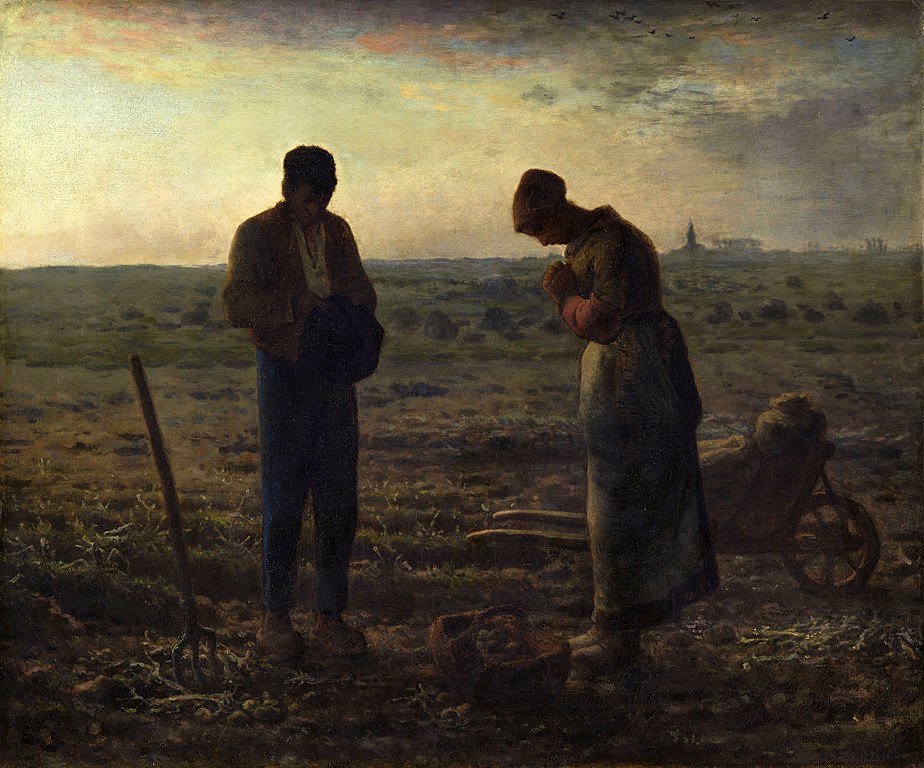
Jean-François Millet, The Angelus, 1857-59, Musee d’Orsay, Paris, France. Museum’s website.
The Potato Famine of Ireland must surely be the lowest point in the history of the potato; it was a devastating period that decimated the Irish population. When a potato blight wiped out potato crops in the 1840s, this Irish staple food disappeared and soon a quarter of the population was gone; a million died and another million left the country to find new lives in the New World. These consequences still affect Ireland to this day.
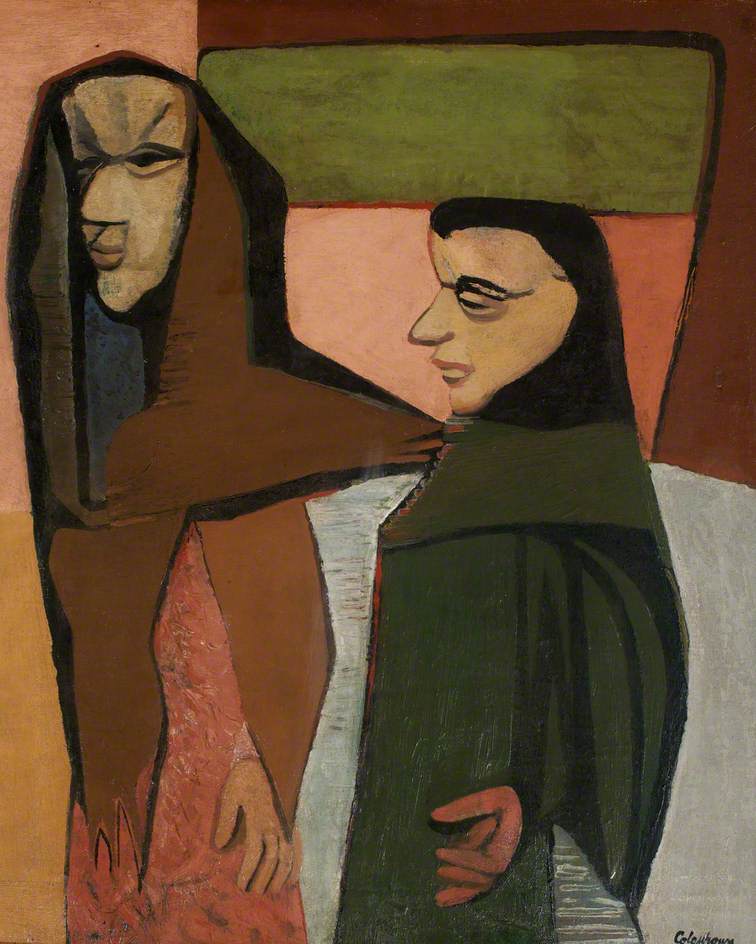
Robert Colquhoun, The Potato Diggers, 1946, Aberystwyth University School of Art, Wales, UK. ArtUK.
It is rumored that it was US President Thomas Jefferson who brought us what he called “potatoes served in the French manner— yes, that is pommes frites, french fries, or chips as they are also known. Mmmm, delicious. The average American will eat almost 30 pounds of French fries per year—that’s 4.5 billion pounds of potato! Today, artist and professor Jeffrey Allen Price celebrates the potato in all its forms on Instagram as thinkpotato. There are also potato museums all over North America and Europe; we clearly just can’t get enough of the potato. Down below you can see a print made by David Hockney depicting the owners of the Fish and Chip Shop and the 17-year-old artist himself. The print carries an essence of heartwarming teenage memory, and for many years was displayed over the fryers in the local chippy.
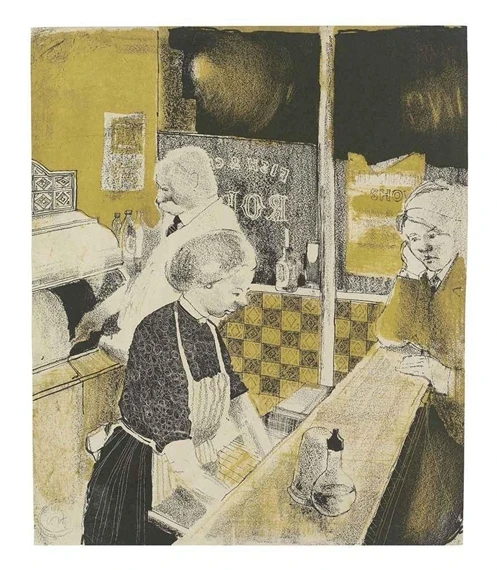
David Hockney, Fish and Chip Shop, 1954, private collection. MutualArt.
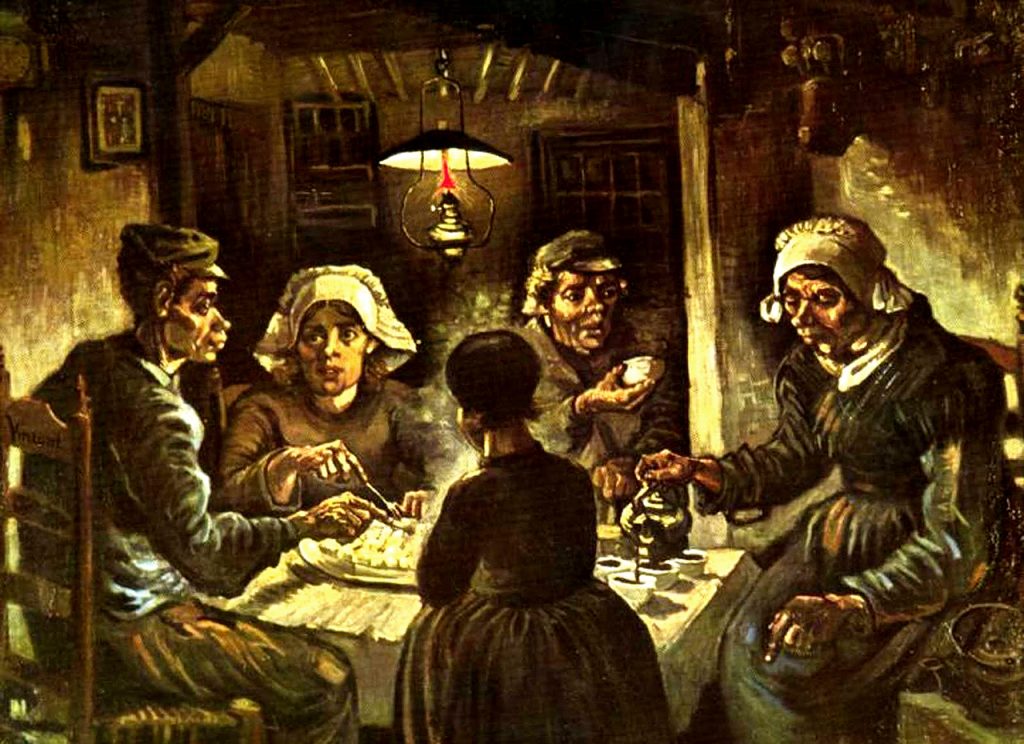
Vincent van Gogh, The Potato Eaters, 1885, Van Gogh Museum, Amsterdam, Netherlands.
Potatoes were a central motif in the work of Vincent van Gogh. The Potato Eaters is an intimate domestic scene, full of social and moral messages, and one of his best-known paintings. It depicts a family sitting at a table and eating a dinner of potatoes. Critics hated the painting, but Van Gogh loved it. He said to his brother Theo: I have tried to make it clear how those people, eating their potatoes under the lamplight, have dug the earth with those very hands they put in the dish. The image below is also by Van Gogh, but four years later, and the dark earthy tones have been replaced with bright touches of blue, red, and yellow.
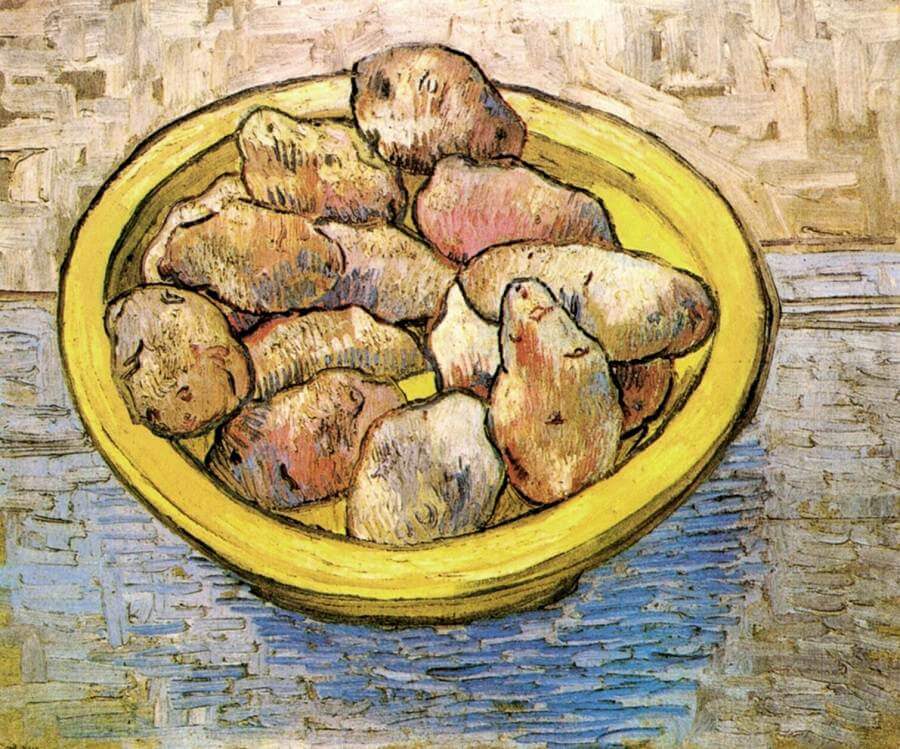
Vincent van Gogh, Still Life With Potatoes, 1889, Kroller-Muller Museum, Netherlands. Museum’s website.
Harvesting potatoes is tough, back-breaking work. Traditionally, the workers on a potato farm were a close-knit community – families who lived together and worked together. They were supplied with basic accommodation, hay or straw for bedding, plus blankets and cooking utensils. And of course, a supply of potatoes, which formed a large part of their diet. Potato harvesting may be mostly mechanized today, but the famously nutty and firm Jersey Royal is still harvested by hand in the Channel Islands.
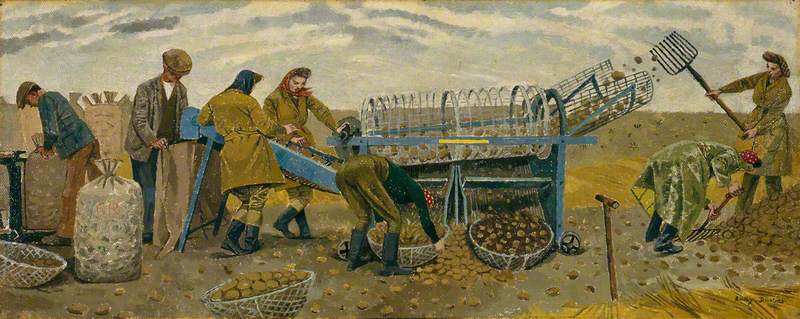
Evelyn Mary Dunbar, Potato Sorting, Berwick, 1943, Manchester Art Gallery, UK. ArtUK.
Avante-garde Dutch artist Jacqueline De Jong is fascinated by the potato. In the 1960s she was a key player in the Situationist political/artistic movement. Now, from her home in France, she cultivates rare species of potato which metamorphose into her art. Her mixed media Potato Blues series was well-received, and more recently she has been working on her Pomme de Jong series. This involves casting dried potatoes and potato shoots into platinum and gold jewelry.
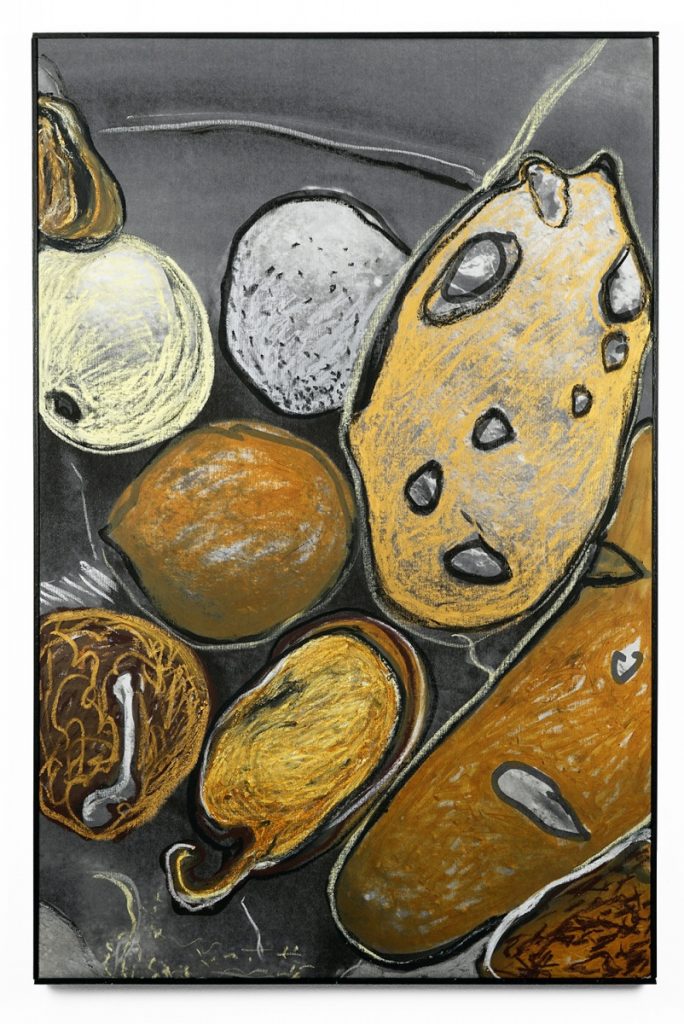
Jacqueline de Jong, Folva’s Playing Ground En Derive, 2017, Hengelo, Netherlands. @ onestar press
A film by London-based artist Iman Datoo called Kinnomic Botany is showing at the Super Natural exhibition at the Eden Project in Cornwall, England, until 1st May 2023. Through the ‘eyes’ of a potato, Datoo guides us inside the multi-world of the potato. This exploration of the cultural history of the potato reminds us that the Quechuan language has over 30 words for the potato (as well as 5,000 potato plant varieties). Astonishing.
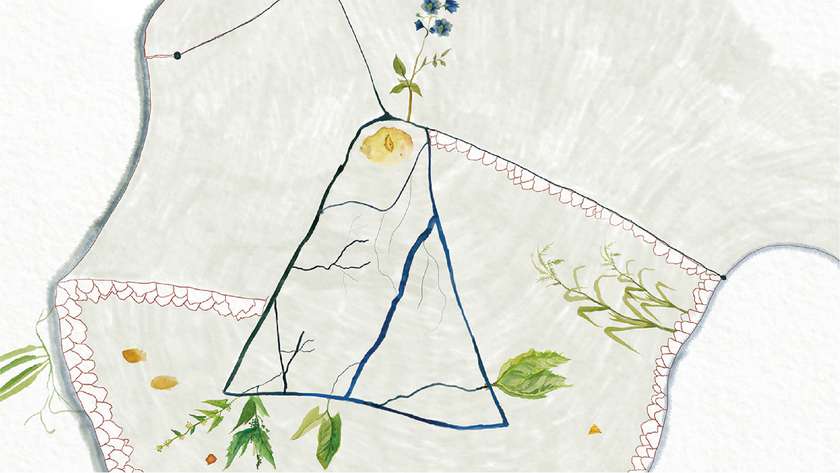
Iman Datoo, Kinnomic Botany, 2021, London, UK. FutureArchitecture.
The potato—humble yet utterly delicious. All hail the goddess Axomama, our glorious potato mother. Now, I’m off to get some chips!
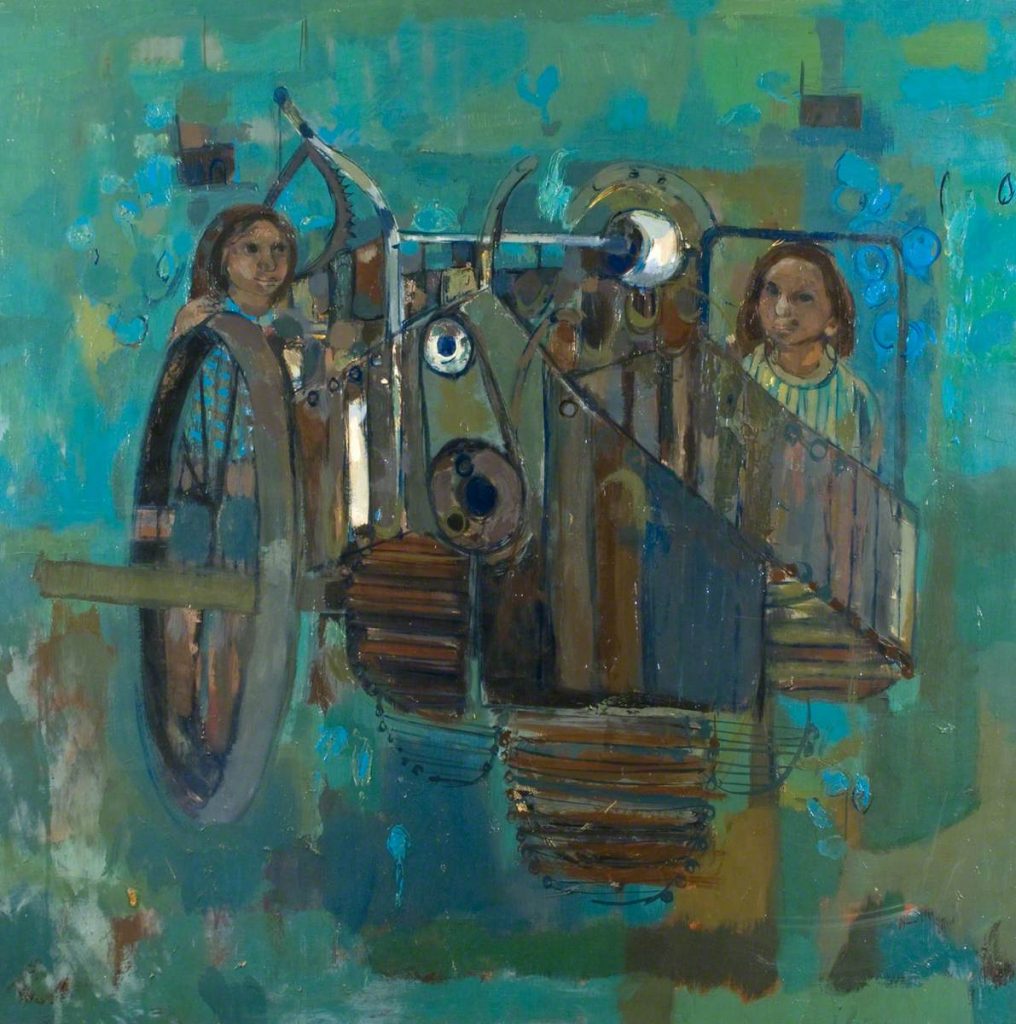
Elizabeth Watson, Children With Potato Machine, 1964, University of Dundee, Scotland, UK. ArtUK.
DailyArt Magazine needs your support. Every contribution, however big or small, is very valuable for our future. Thanks to it, we will be able to sustain and grow the Magazine. Thank you for your help!